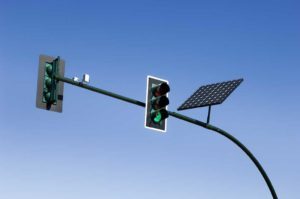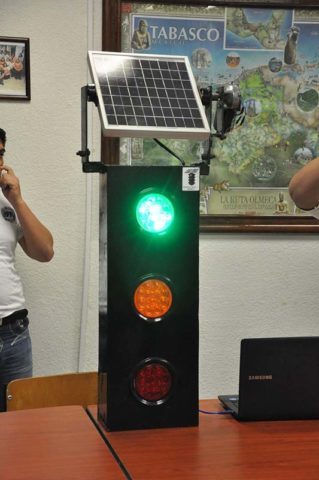| The Ministry of Public Works and Transport (MOPT), through the Directorate General of Traffic Engineering, moves forward with the process to intervene in 76 other traffic lights intersections with photovoltaic systems, so that the systems work with solar energy. 1 million US$ is available for the execution of these works, resources provided by the Road Safety Council (COSEVI). |

According to engineer Diego Rugama, the forecast is that as early as December these systems are running with clean energy so that 235 intersections are located in San José, that is, 50% of all the devices that make up the Centralized System of Semaphores (474 in total) located in San Jose, Alajuela, Heredia
“As coordination, we are working with COSEVI to start in the next months the 3rd Phase of this project if everything is executed as projected, in December, 76 more solar-powered intersections would be running with solar energy” explained Rugama.
The company awarded with the works must supply and place the panels or photovoltaic systems within 300 calendar days, the start order was given on January 24 by the Traffic Lights Department. In the work are invested $ 1,065,000, resources provided by the Road Safety Council (COSEVI).
The official clarified that in the coming days the Board of Directors of COSEVI would review the cartel, later sent to the Comptroller General of the Republic for its endorsement so it is expected that between July and August would be given a start. This time the works have an execution time of 190 days so in December they estimate to conclude this 3rd phase of the project. The works would be in charge of the Enterprise System RC S.A., which has developed the two previous stages.

Rugama explained that in addition to the solar panel, lithium batteries are placed in the systems that allow to store energy so that the devices operate in average 14 hours with absence of sunlight, if for some reason this load is not enough, it automatically connects to the electrical system with which it is achieved that its operation will never be interrupted.
“We have made measurements and systems of 60 kilowatts we currently have them in 10 Kilo-Watts per hour (KWh), that is to say they reduce their electricity consumption by 80%, this consumption must be maintained in case the system fails and must operate with electricity… in the coming days we will send to the National Power and Light Company the list of the 159 systems currently placed to include them with the minimum consumption,” said Rugama.
The project aims to improve road safety in the different sectors where the systems are located since in case of electric outages or blackouts the traffic lights would not be affected, which is expected to avoid traffic accidents and unnecessary congestion. In addition, the operation of these systems with clean energy represents a significant saving in electricity consumption.
In the studies that are carried out before each stage of the project, two fundamental aspects are evaluated: the solar radiation at the point and the obstacles that can surround the system (trees, buildings, mainly), based on the design of the hours of sun, determine the number of panels and batteries to be placed at each intersection.
MOPT-COSEVI estimate that in 2022 all the semaphores that make up the Centralized System obtain the energy to operate from the sun.

